Ford Puma vs Skoda Kodiaq – Which car suits you better?
Both models have their strengths – but which one suits you more?
Compare performance, efficiency, price and space directly: Ford Puma or Skoda Kodiaq?
Costs and Efficiency: Price and efficiency are often the first things buyers look at. Here it becomes clear which model has the long-term edge – whether at the pump, the plug, or in purchase price.
Ford Puma has a clearly advantage in terms of price – it starts at 24800 £, while the Skoda Kodiaq costs 36800 £. That’s a price difference of around 12077 £.
Fuel consumption also shows a difference: Skoda Kodiaq manages with 0.40 L and is therefore clearly more efficient than the Ford Puma with 5.40 L. The difference is about 5 L per 100 km.
As for range, the Ford Puma performs significantly better – achieving up to 376 km, about 253 km more than the Skoda Kodiaq.
Engine and Performance: Under the bonnet, it becomes clear which model is tuned for sportiness and which one takes the lead when you hit the accelerator.
When it comes to engine power, the Skoda Kodiaq has a distinct edge – offering 265 HP compared to 168 HP. That’s roughly 97 HP more horsepower.
In acceleration from 0 to 100 km/h, the Skoda Kodiaq is slightly quicker – completing the sprint in 6.30 s, while the Ford Puma takes 7.40 s. That’s about 1.10 s faster.
In terms of top speed, the Skoda Kodiaq performs slight better – reaching 231 km/h, while the Ford Puma tops out at 210 km/h. The difference is around 21 km/h.
There’s also a difference in torque: Skoda Kodiaq pulls clearly perceptible stronger with 400 Nm compared to 290 Nm. That’s about 110 Nm difference.
Space and Everyday Use: Cabin size, boot volume and payload all play a role in everyday practicality. Here, comfort and flexibility make the difference.
Both vehicles offer seating for 5 people.
In curb weight, Ford Puma is clearly perceptible lighter – 1316 kg compared to 1684 kg. The difference is around 368 kg.
In terms of boot space, the Skoda Kodiaq offers significantly more room – 910 L compared to 523 L. That’s a difference of about 387 L.
In maximum load capacity, the Skoda Kodiaq performs noticeable better – up to 2105 L, which is about 822 L more than the Ford Puma.
When it comes to payload, Skoda Kodiaq a bit takes the win – 545 kg compared to 469 kg. That’s a difference of about 76 kg.
Who comes out on top?
Overall, the Skoda Kodiaq shows itself to be outperforms in nearly all aspects and secures the title of DriveDuel Champion.
It convinces with the more balanced overall package and proves to be the more versatile choice for everyday use.
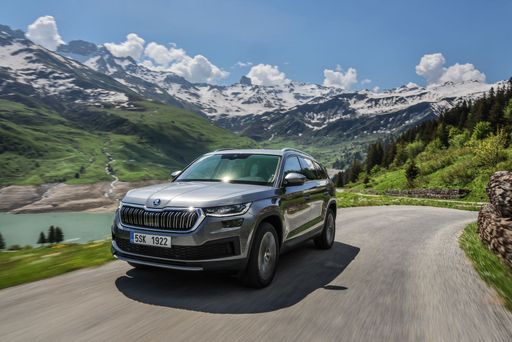
Skoda Kodiaq
Ford Puma
The Ford Puma presents itself as a stylish compact SUV with a distinctive design that combines practicality with a dynamic driving experience. Its sleek lines and sporty aesthetics make it stand out on the road, while the interior offers a comfortable and tech-savvy environment. With an emphasis on efficiency and a smooth drive, the Ford Puma is well-suited for both urban commutes and countryside adventures.
details @ puma.fordpresskits.com
@ puma.fordpresskits.com
 @ puma.fordpresskits.com
@ puma.fordpresskits.com
 @ puma.fordpresskits.com
@ puma.fordpresskits.com
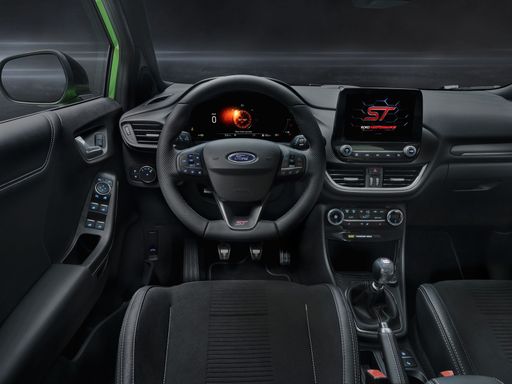 @ puma.fordpresskits.com
@ puma.fordpresskits.com
Skoda Kodiaq
The Škoda Kodiaq impresses with its spacious interior and sleek design, making it a popular choice for families and adventurers alike. Equipped with a range of modern features, it offers a comfortable driving experience and outstanding versatility. Its robust build and refined handling make it suitable for both urban settings and countryside escapades.
details @ skoda-media.de
@ skoda-media.de
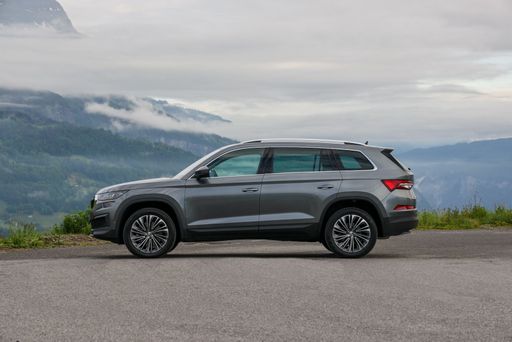 @ skoda-media.de
@ skoda-media.de
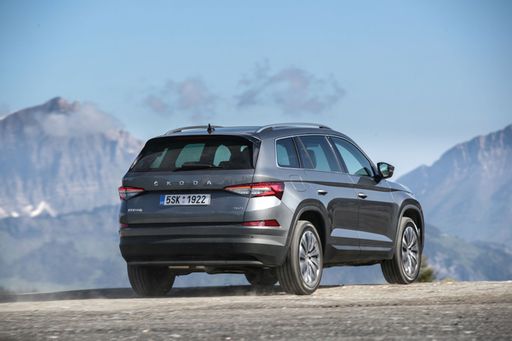 @ skoda-media.de
@ skoda-media.de
 @ skoda-media.de
@ skoda-media.de
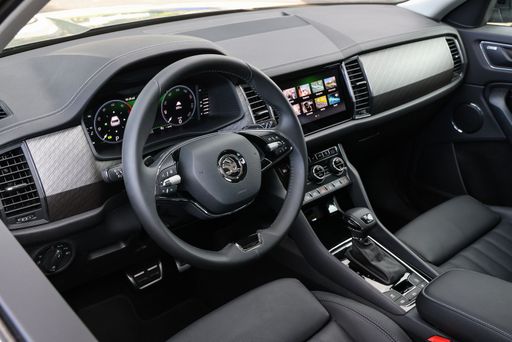 @ skoda-media.de
@ skoda-media.de

|

|
|
|
|
Costs and Consumption |
|
|---|---|
|
Price
24800 - 36300 £
|
Price
36800 - 49600 £
|
|
Consumption L/100km
5.4 - 5.9 L
|
Consumption L/100km
0.4 - 8.2 L
|
|
Consumption kWh/100km
13.1 - 13.9 kWh
|
Consumption kWh/100km
-
|
|
Electric Range
361 - 376 km
|
Electric Range
113 - 123 km
|
|
Battery Capacity
43 kWh
|
Battery Capacity
19.70 kWh
|
|
co2
0 - 135 g/km
|
co2
9 - 186 g/km
|
|
Fuel tank capacity
42 L
|
Fuel tank capacity
45 - 58 L
|
Dimensions and Body |
|
|---|---|
|
Body Type
SUV
|
Body Type
SUV
|
|
Seats
5
|
Seats
5
|
|
Doors
5
|
Doors
5
|
|
Curb weight
1316 - 1563 kg
|
Curb weight
1684 - 1970 kg
|
|
Trunk capacity
456 - 523 L
|
Trunk capacity
745 - 910 L
|
|
Length
4186 - 4226 mm
|
Length
4758 - 4761 mm
|
|
Width
1805 mm
|
Width
1864 mm
|
|
Height
1550 - 1555 mm
|
Height
1663 - 1683 mm
|
|
Max trunk capacity
1216 - 1283 L
|
Max trunk capacity
1945 - 2105 L
|
|
Payload
367 - 469 kg
|
Payload
460 - 545 kg
|
Engine and Performance |
|
|---|---|
|
Engine Type
Electric, Petrol MHEV
|
Engine Type
Plugin Hybrid, Petrol, Petrol MHEV, Diesel
|
|
Transmission
Automatic, Manuel
|
Transmission
Automatic
|
|
Transmission Detail
Reduction Gearbox, Manual Gearbox, Dual-Clutch Automatic
|
Transmission Detail
Dual-Clutch Automatic
|
|
Drive Type
Front-Wheel Drive
|
Drive Type
Front-Wheel Drive, All-Wheel Drive
|
|
Power HP
125 - 168 HP
|
Power HP
150 - 265 HP
|
|
Acceleration 0-100km/h
7.4 - 9.8 s
|
Acceleration 0-100km/h
6.3 - 9.7 s
|
|
Max Speed
160 - 210 km/h
|
Max Speed
205 - 231 km/h
|
|
Torque
170 - 290 Nm
|
Torque
250 - 400 Nm
|
|
Number of Cylinders
3
|
Number of Cylinders
4
|
|
Power kW
92 - 124 kW
|
Power kW
110 - 195 kW
|
|
Engine capacity
999 cm3
|
Engine capacity
1498 - 1984 cm3
|
General |
|
|---|---|
|
Model Year
2025
|
Model Year
2024 - 2025
|
|
CO2 Efficiency Class
A, D
|
CO2 Efficiency Class
B, F, G, E
|
|
Brand
Ford
|
Brand
Skoda
|
Is the Ford Puma offered with different drivetrains?
The Ford Puma is offered with Front-Wheel Drive.
The prices and data displayed are estimates based on German list prices and may vary by country. This information is not legally binding.
